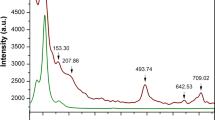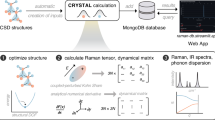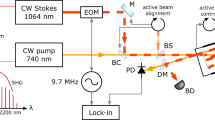Abstract
THE band characteristic of the OH group has been recorded in the Raman spectra of many hydroxides and alcohols. It has not so far been observed, however, in the case of the stronger acids. Using the improved technique of complementary filters recently developed by Ananthakrishnan1, and giving long exposures varying from six to twelve days, I have succeeded in obtaining spectra with sulphuric acid and crystals of iodic, selenious and telluric acids, in which the band is clearly seen in the 4046 A. excitation. Table 1 gives the frequency shifts. The value for boric acid is taken from Ananthakrishnan's paper2.
This is a preview of subscription content, access via your institution
Access options
Subscribe to this journal
Receive 51 print issues and online access
$199.00 per year
only $3.90 per issue
Buy this article
- Purchase on SpringerLink
- Instant access to full article PDF
Prices may be subject to local taxes which are calculated during checkout
Similar content being viewed by others
References
Ananthakrishnan, R., Proc. Ind. Acad. Sci., A, 5, 76 (1937).
Ananthakrishnan, R., Proc. Ind. Acad. Sci., A, 5, 200 (1937).
Hilbert, G. E., Wulf, O. R., Hendricks, S. B., and Liddell, U., NATURE, 135, 147 (1935).
Latimer, W. M., and Rodebush, W. H., J. Amer. Chem. Soc., 42, 1419 (1920).
Badger, R. M., and Bauer, S. H., J. Chem. Phys., 5, 369 (1937).
Bernal, J. D., and Megaw, H. D., Proc. Roy. Soc., A, 151, 384 (1935).
Author information
Authors and Affiliations
Rights and permissions
About this article
Cite this article
VENKATESWARAN, C. The O-H Raman Frequency in Inorganic Acids. Nature 140, 151 (1937). https://doi.org/10.1038/140151b0
Issue date:
DOI: https://doi.org/10.1038/140151b0



